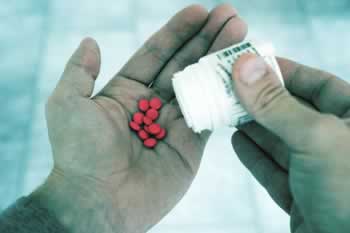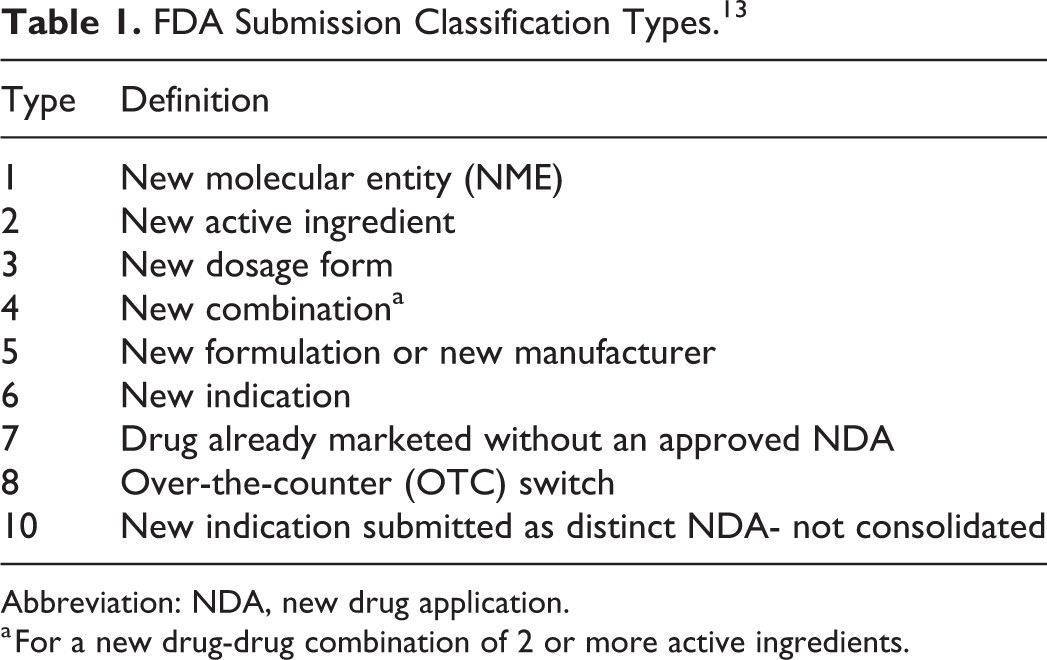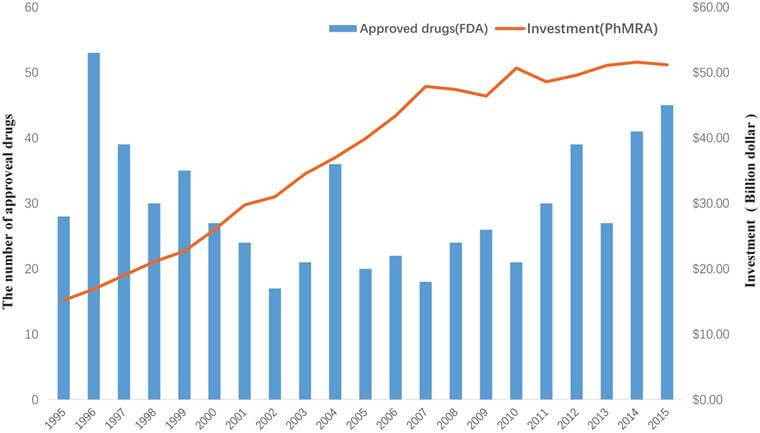As the backbone of any drug formulation, APIs play a crucial role in determining the efficacy, safety, and commercial success of pharmaceutical products. This comprehensive guide will explore the intricacies of API strategy optimization, providing valuable insights for pharmaceutical companies, researchers, and industry professionals seeking to enhance their drug development processes and achieve desired outcomes.
Understanding the Significance of APIs in Pharmaceutical Development
Active Pharmaceutical Ingredients are the biologically active components in any drug formulation that produce the intended therapeutic effect. These compounds are the heart and soul of pharmaceutical products, making their selection, sourcing, and optimization critical to the success of any drug development project.
The Role of APIs in Drug Efficacy and Safety
APIs are responsible for the pharmacological activity of a drug, directly impacting its effectiveness in treating specific conditions. Moreover, the purity, stability, and quality of APIs significantly influence the safety profile of the final drug product. A well-optimized API strategy ensures that the therapeutic benefits are maximized while potential risks are minimized.
Economic Implications of API Strategy
The choice of API and its associated strategy can have far-reaching economic consequences for pharmaceutical companies. Factors such as manufacturing costs, supply chain reliability, and intellectual property considerations all stem from API-related decisions. An optimized API strategy can lead to reduced production costs, improved profit margins, and enhanced market competitiveness.
Key Components of an Effective API Strategy
To develop a robust API strategy, several crucial elements must be carefully considered and integrated. These components form the foundation upon which successful pharmaceutical products are built.
Quality by Design (QbD) Approach
Implementing a Quality by Design approach in API development ensures that quality is built into the product from the outset. This systematic method involves defining quality target product profiles, identifying critical quality attributes, and establishing a design space for manufacturing processes.
“Quality by Design is not just a regulatory expectation, but a mindset that drives innovation and consistency in pharmaceutical development.” – Dr. Janet Woodcock, Director of the Center for Drug Evaluation and Research (CDER) at the FDA
Sourcing and Supply Chain Management
A reliable and efficient supply chain is crucial for maintaining a consistent supply of high-quality APIs. This involves careful selection of suppliers, risk assessment, and contingency planning to mitigate potential disruptions.
Regulatory Compliance and Documentation
Ensuring compliance with regulatory requirements is paramount in API strategy. This includes maintaining comprehensive documentation, adhering to Good Manufacturing Practices (GMP), and staying abreast of evolving regulatory landscapes across different markets.
Innovative Approaches to API Optimization
As the pharmaceutical industry continues to advance, new methodologies and technologies are emerging to enhance API optimization. Embracing these innovations can provide a competitive edge and lead to improved outcomes.
Artificial Intelligence in API Design
Artificial Intelligence (AI) and Machine Learning (ML) are revolutionizing API design by predicting molecular properties, optimizing synthesis routes, and accelerating the drug discovery process. These technologies can significantly reduce the time and cost associated with API development.
Green Chemistry Principles
Incorporating green chemistry principles in API synthesis not only reduces environmental impact but can also lead to more efficient and cost-effective manufacturing processes. This approach focuses on minimizing waste, using safer solvents, and improving atom economy.
Continuous Manufacturing
Continuous manufacturing processes for APIs offer several advantages over traditional batch production, including improved quality control, reduced production time, and lower costs. This approach is gaining traction in the industry and is supported by regulatory agencies.
Strategies for Enhancing API Performance
Optimizing API performance is crucial for developing effective and competitive pharmaceutical products. Several strategies can be employed to enhance the properties and efficacy of APIs.
Crystal Engineering and Polymorph Screening
Crystal engineering techniques and comprehensive polymorph screening can improve the physicochemical properties of APIs, such as solubility, stability, and bioavailability. This can lead to more effective drug formulations and potentially extend patent protection.
Prodrug Approaches
Developing prodrugs can overcome limitations associated with the parent API, such as poor solubility or permeability. This strategy involves chemically modifying the API to improve its pharmacokinetic properties, with the prodrug converting to the active form in the body.
Nanotechnology in API Formulation
Nanotechnology offers innovative solutions for API delivery, including nanocrystals, nanoparticles, and nanocomposites. These approaches can enhance bioavailability, improve targeting, and reduce side effects of APIs.
Managing API Lifecycle and Intellectual Property
Effective management of the API lifecycle and associated intellectual property is crucial for maximizing the commercial potential of pharmaceutical products.
Patent Strategies for APIs
Developing a comprehensive patent strategy for APIs involves not only protecting the chemical structure but also considering patents for manufacturing processes, polymorphs, and formulations. This multi-layered approach can provide extended market exclusivity.
Lifecycle Management Techniques
Implementing lifecycle management strategies, such as developing new formulations, combination products, or exploring new indications, can extend the commercial viability of APIs beyond patent expiration.
Overcoming Challenges in API Development and Manufacturing
The path to API optimization is often fraught with challenges that must be navigated skillfully to achieve success.
Addressing Impurity Profiles
Managing and controlling impurities in APIs is critical for ensuring product safety and meeting regulatory requirements. Advanced analytical techniques and robust process understanding are essential for addressing this challenge.
Scalability and Process Optimization
Scaling up API production from laboratory to commercial scale presents numerous challenges. Implementing process analytical technology (PAT) and design of experiments (DoE) approaches can facilitate smooth scale-up and process optimization.
The Future of API Strategy: Emerging Trends and Technologies
As we look to the future, several trends and technologies are poised to reshape API strategy and pharmaceutical development.
Personalized Medicine and API Customization
The rise of personalized medicine is driving the need for more flexible and customizable API strategies. This may involve developing APIs that can be tailored to individual patient profiles or genetic markers.
Biocatalysis and Enzymatic Processes
Biocatalytic approaches to API synthesis are gaining prominence due to their potential for greener, more efficient, and highly selective chemical transformations. Engineered enzymes and whole-cell biocatalysts are opening new avenues for API production.
3D Printing of APIs
Additive manufacturing technologies, such as 3D printing, are being explored for on-demand production of APIs and personalized dosage forms. This could revolutionize drug manufacturing and distribution, particularly for rare diseases or in remote locations.
Case Studies: Successful API Strategy Implementation
Examining real-world examples of successful API strategy implementation can provide valuable insights and inspiration for optimizing your own approach.
Case Study 1: Improving Solubility of a Poorly Soluble API
A pharmaceutical company faced challenges with a promising API candidate that exhibited poor aqueous solubility. By employing a combination of crystal engineering techniques and nanoformulation approaches, they were able to significantly enhance the bioavailability of the compound, leading to successful clinical trials and eventual market approval.
Case Study 2: Streamlining API Manufacturing Process
A generic drug manufacturer implemented continuous flow chemistry for the synthesis of a high-volume API. This resulted in a 30% reduction in production costs, improved quality consistency, and a smaller environmental footprint. The optimized process also allowed for faster response to market demands.
Best Practices for API Strategy Optimization
To ensure the success of your API strategy, consider implementing these best practices:
- Conduct thorough market research and competitive analysis to inform API selection and development priorities.
- Establish cross-functional teams that include R&D, manufacturing, regulatory affairs, and commercial experts to provide diverse perspectives on API strategy.
- Invest in robust analytical capabilities to support API characterization, impurity profiling, and quality control.
- Develop strong relationships with API suppliers and consider vertical integration where appropriate.
- Implement a comprehensive risk management plan that addresses potential supply chain disruptions, regulatory changes, and market shifts.
- Stay informed about emerging technologies and regulatory trends that may impact API development and manufacturing.
- Prioritize sustainability and green chemistry principles in API synthesis and production processes.
- Continuously evaluate and optimize manufacturing processes to improve efficiency and reduce costs.
- Develop a clear intellectual property strategy that protects not only the API structure but also key processes and formulations.
- Foster a culture of innovation and continuous improvement within your organization to drive API strategy optimization.
Measuring Success: Key Performance Indicators for API Strategy
To gauge the effectiveness of your API strategy, it’s essential to establish and monitor relevant key performance indicators (KPIs). Some important metrics to consider include:
- Time to market for new API-based products
- Cost of goods sold (COGS) for API manufacturing
- API yield and purity levels
- Number of regulatory observations or issues related to API quality
- Supply chain reliability and on-time delivery rates
- Patent portfolio strength and duration of market exclusivity
- Return on investment (ROI) for API development projects
- Customer satisfaction with API-based products
Regularly reviewing these KPIs can help identify areas for improvement and guide strategic decision-making in your API optimization efforts.
Key Takeaways
- A well-optimized API strategy is crucial for developing effective, safe, and commercially successful pharmaceutical products.
- Implementing a Quality by Design approach, ensuring regulatory compliance, and managing the supply chain are fundamental components of an effective API strategy.
- Innovative technologies such as AI, green chemistry, and continuous manufacturing are reshaping API optimization approaches.
- Strategies like crystal engineering, prodrug development, and nanotechnology can significantly enhance API performance.
- Effective lifecycle management and robust intellectual property strategies are essential for maximizing the commercial potential of APIs.
- Overcoming challenges in impurity control and scalability is critical for successful API development and manufacturing.
- Emerging trends like personalized medicine, biocatalysis, and 3D printing are set to influence future API strategies.
- Implementing best practices and monitoring key performance indicators are crucial for ongoing API strategy optimization.
FAQs
- Q: What is the most important factor to consider when developing an API strategy?
A: While many factors are important, the most crucial consideration is often the quality and consistency of the API. This encompasses aspects such as purity, stability, and manufacturability, which directly impact the safety and efficacy of the final drug product. - Q: How can small pharmaceutical companies compete with larger ones in API development?
A: Small companies can focus on niche markets, leverage innovative technologies like AI for drug discovery, form strategic partnerships, and prioritize flexibility and speed in their API development processes to compete effectively. - Q: What role does sustainability play in modern API strategy?
A: Sustainability is increasingly important in API strategy, influencing choices in synthesis routes, solvent use, and manufacturing processes. Adopting green chemistry principles can lead to more environmentally friendly and often more cost-effective API production. - Q: How is the trend towards personalized medicine affecting API strategies?
A: Personalized medicine is driving the need for more flexible API strategies, including the development of APIs that can be tailored to individual patient profiles or genetic markers. This may lead to smaller batch sizes and more diverse API portfolios. - Q: What are the potential benefits of implementing continuous manufacturing for APIs?
A: Continuous manufacturing can offer several advantages, including improved quality control, reduced production time, lower costs, smaller facility footprints, and the ability to respond more quickly to changes in demand. It also aligns well with Quality by Design principles.
Resources:
: https://www.fda.gov/drugs/development-approval-process-drugs/drug-development-process-step-1-discovery-and-development
: https://www.mckinsey.com/industries/life-sciences/our-insights/the-next-horizon-of-innovation-in-pharmaceutical-manufacturing
: https://www.fda.gov/drugs/pharmaceutical-quality-resources/quality-design-qbd
: https://www.pharmtech.com/view/api-supply-chain-strategies-for-success
: https://www.ema.europa.eu/en/human-regulatory/research-development/compliance/good-manufacturing-practice
: https://www.nature.com/articles/s41586-021-03819-2
: https://pubs.acs.org/doi/10.1021/acs.oprd.9b00524
: https://www.fda.gov/drugs/guidance-compliance-regulatory-information/continuous-manufacturing
: https://www.sciencedirect.com/science/article/pii/S0022354915000635
: https://www.ncbi.nlm.nih.gov/pmc/articles/PMC3978543/
: https://www.nature.com/articles/s41578-020-00235-2
: https://www.wipo.int/patents/en/topics/life_sciences.html
: https://www.mckinsey.com/industries/life-sciences/our-insights/a-new-rx-for-pharmaceutical-lifecycle-management
: https://www.usp.org/chemical-medicines/impurities-and-contaminants
: https://www.sciencedirect.com/science/article/pii/S2590156719300763
: https://www.nature.com/articles/s41573-019-0053-0
: https://pubs.acs.org/doi/10.1021/acs.chemrev.0c00858
: https://www.nature.com/articles/s41578-018-0005-z
: https://www.sciencedirect.com/science/article/pii/S0378517320308723
: https://pubs.acs.org/doi/10.1021/acs.oprd.0c00222





















